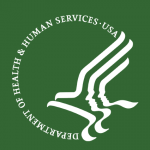As chief information officer of the Indian Health Service, Mitchell Thornbrugh will play a critical role as the agency updates from a system that first debuted in 1969.
Located within the Health and Human Services Department, the Indian Health Service provides federal health services to 2.6 million American Indians and Alaska Natives.
The agency relies on a clinical and patient administrative information system—with some 20,000 nationwide users—that first debuted in 1969. Its outdated technical architecture and infrastructure has forced IHS to begin a multiyear modernization effort.
The massive undertaking is fraught with complexity and risk, comparable in nature to concurrent multibillion-dollar, multi-year modernization efforts at the Defense and Veterans Affairs departments. Yet as IHS embarks on its journey to modernize health care for Native Americans across the country, it has an IT leader in Chief Information Officer Mitchell Thornbrugh who boasts both a successful track record of modernization efforts and a strong connection to the population it serves as a citizen of the Muscogee Creek Nation in Oklahoma.
“You’ll find that about 70% of the people who work for IHS are Native Americans across the agency, so it’s very common for us to say, ‘This is where our families get health care,’” Thornbrugh told Nextgov. “So [this modernization] is hugely important to us. The current system is tough.”
Last June, the Government Accountability Office placed IHS’ health system among its “10 Most Critical Legacy Systems in Need of Modernization” list. The audit, which urged HHS to begin modernizing the system immediately, highlighted several inadequacies. The system is coded in C++ and MUMPS, the latter HHS considers a legacy programming language few programmers know anymore. In addition, the system is installed on “hundreds of separate computers,” which has led to variations in configurations at each site. In addition, internal surveys of more than 1,800 users indicated an overwhelming majority—93%—felt “now was the time” for IHS to make a change.
Want to publish your own articles on DistilINFO Publications?
Send us an email, we will get in touch with you.
The budding modernization effort and mission to serve the Native American population is what led Thornbrugh to take on the IHS CIO role in Rockville, Maryland—first in acting capacity in 2018 and as permanent CIO in 2019—despite living in Oklahoma with his wife and three children. In addition, Thornbrugh is one of a handful of executives who previously led a health IT modernization effort. As the CIO of the W.W. Hastings Indian Hospital in the late-2000s, Thornbrugh successfully transitioned the hospital to a commercial-off-the-shelf system. The hospital ultimately transitioned to a Cerner-based system that went live in 2015, but the journey and challenges along the way could prove invaluable as IHS works its way through its own modernization.
“I would say having done this before is critical experience, that’s one of the reasons why I wanted to capitalize on gaining that experience and bring it to bear for more impact for all tribes and all patients across the country,” Thornbrugh said.
As it stands, Thornbrugh said IHS is in the planning process for the modernization, heavily focused on stakeholder engagement, getting funding and designing how a new system will roll out. In fiscal 2019, with assistance from the HHS Office of the Chief Technology Officer, IHS engaged contractors with a modernization research project that sought to ascertain the best approach for IHS. Feedback from tribal, federal and private industry stakeholders indicated the most effective approach would be to replace the entire health system with a COTS solution while maintaining the existing legacy system until the new system is operational. Thornbrugh said that approach mirrors the approach VA is taking to modernizing its own electronic health records system.
IHS, he said, took a major step in November, notifying tribal leaders nationwide of the pending IT modernization effort. The letter, signed by Rear Adm. Michael D. Weahkee, principal deputy director of IHS, sought additional engagement from tribal leaders through a series of webinars.
“Everyone wants a new system, but that doesn’t always translate into a culture of change and engagement,” Thornbrugh said. “We have to make sure we take an initial willingness to build a culture of change management to drive this effort. You have to build a big enough table to get everyone to bring to bear on a project like this.”
The agency has developed a modernization roadmap essentially outlining next steps in four key domain areas: modernization planning and execution, Resource and Patient Management System stabilization and early wins, data exchange and infrastructure. IHS also aims for its new health systems to be interoperable with VA, although Thornbrugh said that does not mean the agency has to go with a Cerner-built solution.
“I’m confident we can achieve interoperability outside of a single vendor or choosing,” he said.
While IHS is still in the planning phase, Thornbrugh said he’s looking to fiscal 2021 to engage industry with a possible solicitation. Until then, much of his duties will revolve around getting the acquisition started off in the best possible manner.
“We’re poised to get more industry information and make sure we’re touching base with those stakeholders, and any solicitation won’t come without feedback from the tribes,” Thornbrugh said.
Source: Nextgov







